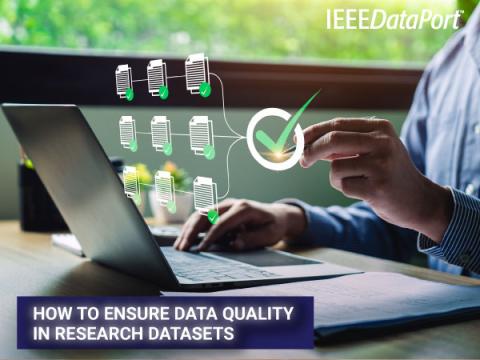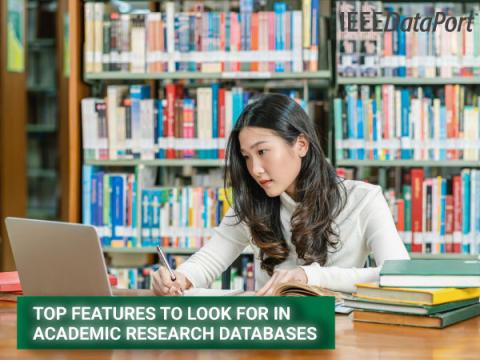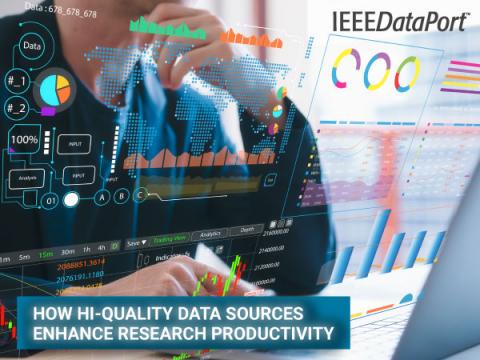Strategies for Improving Data Accessibility in Academic Institutions
What Is Data Accessibility & Why Does It Matter?
Data accessibility means making it easy for people to find and use information. Data accessibility is a key component of any effective data strategy. In schools and research centers, this includes access to study data, academic databases for research, and free data sources. It's important because it helps everyone share knowledge.
When researchers can easily get information, they can:
- Come up with new ideas
- Work together better
- Make bigger discoveries
Good data access also helps make sure research is done right. It lets other people check the work and try to get the same results. This builds trust in the research world.
When everyone can use important resources, it creates a better place for learning. Students and teachers can do more when they share what they know.
Common Challenges in Data Accessibility for Academic Institutions
Users of research databases often face challenges when trying to make data easy to use. Here are some common issues:
- Data Silos: Information gets stuck in different departments and doesn't get shared.
- Old Technology: Outdated systems make it hard to work with new data. Establishing a dataset library is a great start.
- Different Data Formats: When data isn't stored the same way across departments, it's tough to use.
- Privacy Worries: Some information needs to be kept secret, which can limit access.
- Awareness of What's Available: Many people don't know about the resources they could use.
- Budget concerns: It costs a lot to build good systems for storing and sharing data.
These issues can make it hard for research centers to keep up with the growing need for data-driven insights.
Key Strategies to Enhance Data Accessibility
To make data easier to use, research centers need to take several steps:
- Build central database systems to make information easier to find.
- Invest in safe, growing computer systems that can handle more data.
- Make sure data is stored in the same format across the center.
- Train staff and students on how to use data well.
- Work with other organizations to share more information.
- Follow rules about sharing data openly.
By doing these things, centers can make it easier for everyone to use data and work together.
Develop a Centralized Data Repository
Creating one place to store all data is key for research centers especially when a large data set exists. This central spot makes it easy for teachers and students to find big sets of data. When all the information is in one place, people can find what they need without searching through many systems.
A central data store helps people work together better. Researchers can easily share what they find with others. It should be easy to use, even for people who aren't tech experts.
Having one main data store also makes it simpler to follow rules about sharing information. The center can control who sees what, while still letting people use important research materials.
In the end, a good central data system helps everyone in the research community by making free data sources easy to find and use.
Implement Clear Data Management Policies
Good rules for handling data are crucial for research centers. These rules help everyone understand how to manage and share data correctly. Here are some ways to make clear data policies:
- Make a Data Management Plan: Write down how data will be collected, stored, protected, and shared.
- Give People Specific Jobs: Choose who will be in charge of different parts of data management, including establishing the role of database admin.
- Follow the Law: Make sure the center follows rules like GDPR to protect people's information.
- Set Rules for Sharing Data: Decide what information can be shared outside the center and how to do it safely.
- Train People: Teach everyone at the center about these policies so they know how to use data right.
By setting up these clear rules, research centers can handle information better and work well with others while keeping data safe.
Invest in Secure, Scalable Infrastructure
Research centers need to invest in platforms that are secure and scalable. As more research happens and more data is created, a strong system helps keep information available and reliable.
A well-built data system should:
- Work for current needs
- Be able to grow for future needs
- Change as new technologies come out
Keeping data safe is very important. Centers must protect sensitive information from people who shouldn't see it. At the same time, they need to make sure the right people can easily access the data they need.
Using cloud-based solutions can help with safety and growth. These systems let centers store data flexibly, allow access from anywhere, and make it easy for researchers to work together even if they're in different places.
By investing in good computer systems, research centers create a strong base for sharing data without risking its safety or quality.
Promote Data Standardization
Making data look the same across a research center is really important. When data is in a standard format, researchers can understand and use it easily without having to learn new systems all the time.
Having the same data format helps:
- Put different kinds of data together more easily
- Let researchers from different fields work together better
- Make it easier for everyone to talk about and share data
It's also good to have clear rules for how to describe data. This helps people find their way around big sets of data more quickly.
When research centers encourage everyone to use the same data standards, it makes it easier to access databases for research and helps everyone do their best work.
Offer Data Accessibility Training and Support
One of the best ways to make data easier to use is by teaching people how to do it. Many users, even database admins, might not know how to use complex research tools well.
Research centers can help by:
- Offering training sessions for different skill levels
- Setting up help desks or online forums for questions
- Providing clear instructions and user guides
When people feel supported, they're more likely to use the data that's available. Good training helps everyone understand how to find and use valuable information from data libraries.
Facilitate Partnerships and Collaborations
Working with others is really important for making data more accessible. Research centers can team up with:
- Other universities
- Research groups
- Companies
By working together, they can:
- Share resources and knowledge
- Create shared databases
- Come up with new ideas
Partnering with government agencies can also help centers get more free data sources. These team-ups let centers use big datasets while following rules about open access.
Getting students involved in these projects is a great idea too. It teaches them how to work with others and gives them real-world experience with data.
Align with Open-Access Policies and Compliance Requirements
Following open-access rules is key for research centers. These rules help make sure research article databases are freely available to everyone. This openness helps people work together and share ideas across different fields.
Centers also need to follow laws about data. Knowing these rules helps avoid problems that could come from not following them.
By creating good open-access plans, centers can:
- Show researchers clear ways to share their data
- Set up databases for storing and sharing research
- Let researchers keep control of their work while still sharing it
Following these open-access rules makes more educational resources available through research databases.
The Role of Institutional Leadership in Data Accessibility
Leaders at research centers play a big part in making data easy to use. Their ideas set the tone for sharing information openly. Leaders can make big changes by pushing for strong policies that support everyone's right of access to data.
Leaders should:
- Invest in good computer systems
- Encourage different departments to work together
- Talk about why data access is important
When leaders focus on technology, they help researchers use available resources better. By getting different departments to work together, they can find new ways to use free data and perform gold standard dataset research.
Leaders need to explain how better data access helps improve research quality and education. This can inspire teachers and students to use free data sources more.
It's Time to Take Action to Improve Data Accessibility in Research
Research is changing fast, and easy access to data is becoming more important. With the right plans, research centers can solve problems with data access and create a culture that values sharing information.
Centers should:
- Improve their technology infrastructure with platforms like IEEE DataPort
- Invest in central and secure database systems
- Standardize data processes across the center
- Offer good training programs
- Work with outside partners
- Follow open-access policies
Leaders play a large role in making this happen. They need to make data accessibility a top priority and make sure researchers have the tools they need.
IEEE DataPort can help establish better research environments where everyone can benefit from free data sources and large datasets.
It's time for research centers to recognize that making data easy to use isn't just a goal – it's essential for creating new ideas, working together, and advancing knowledge across all fields of study.
- 132 reads



